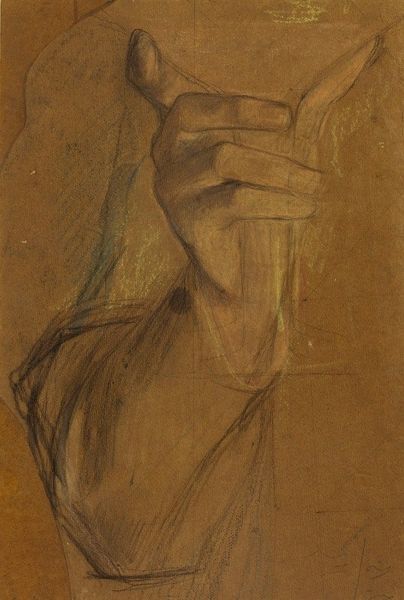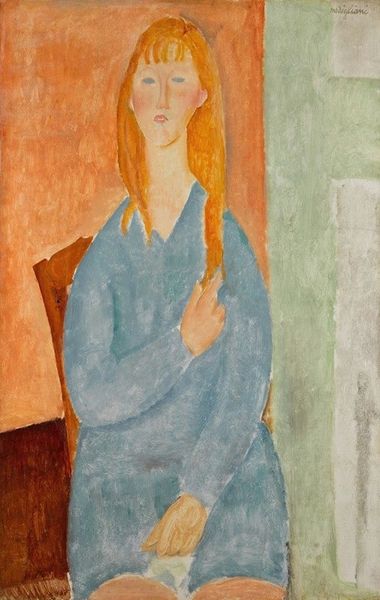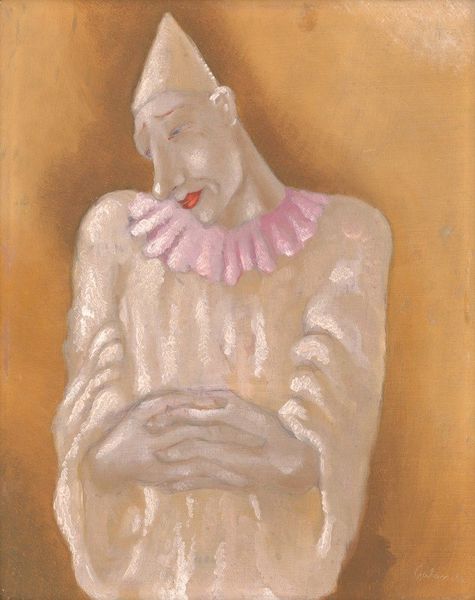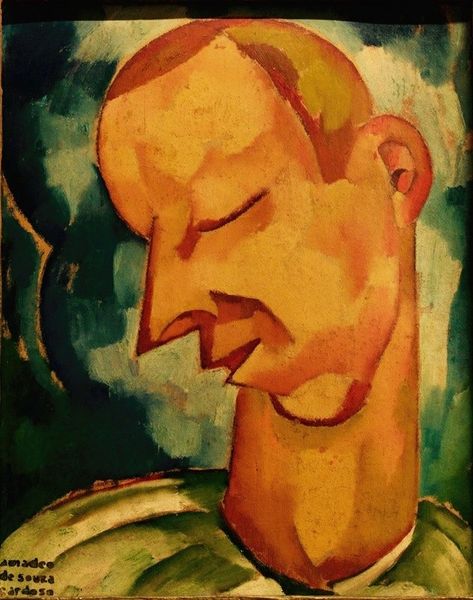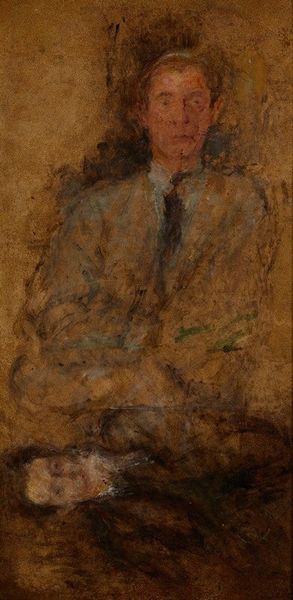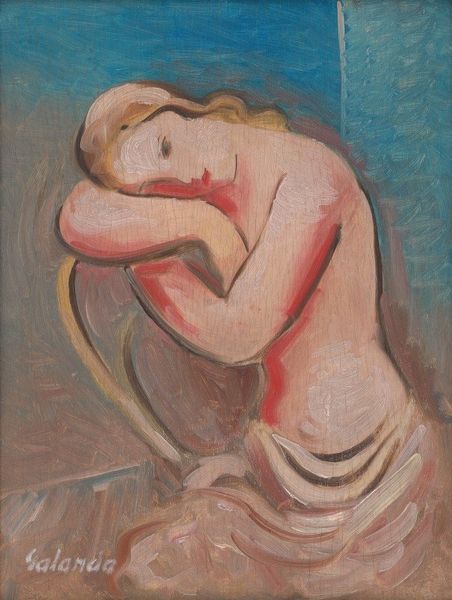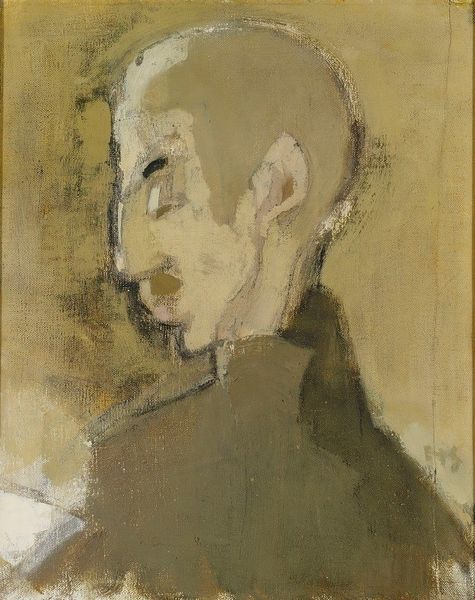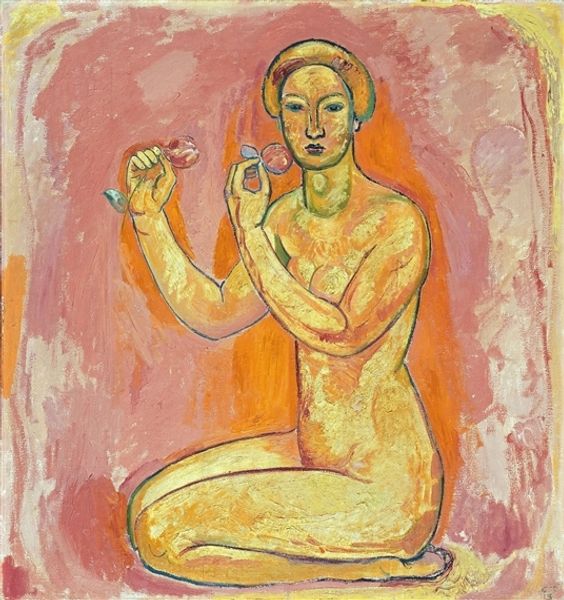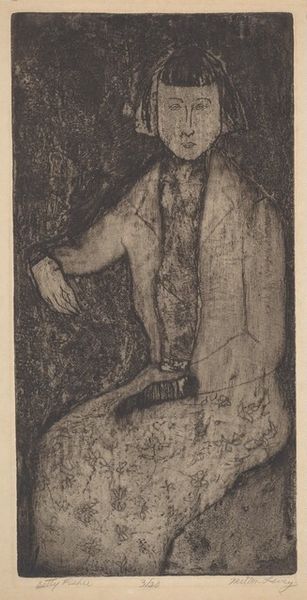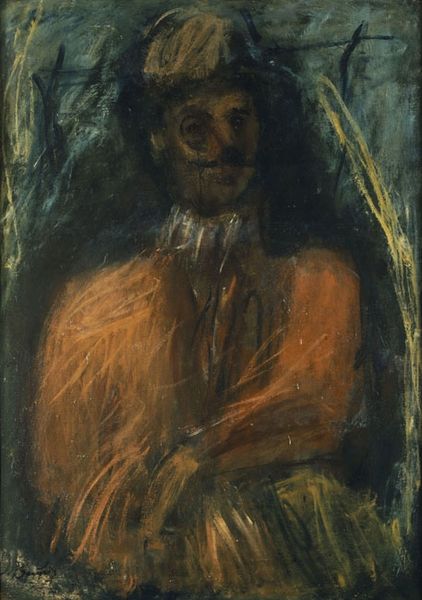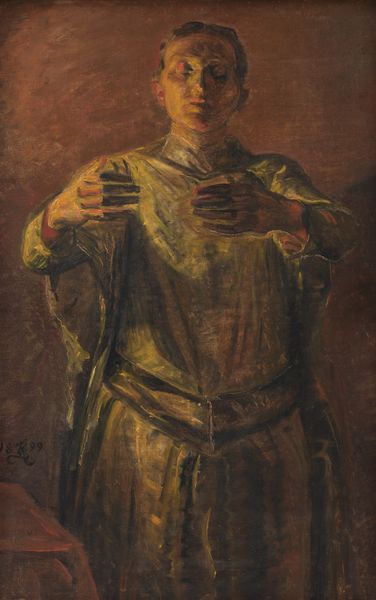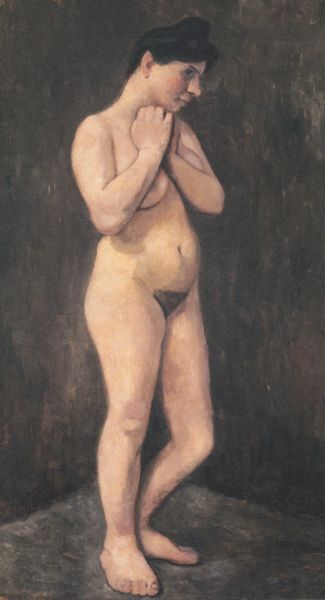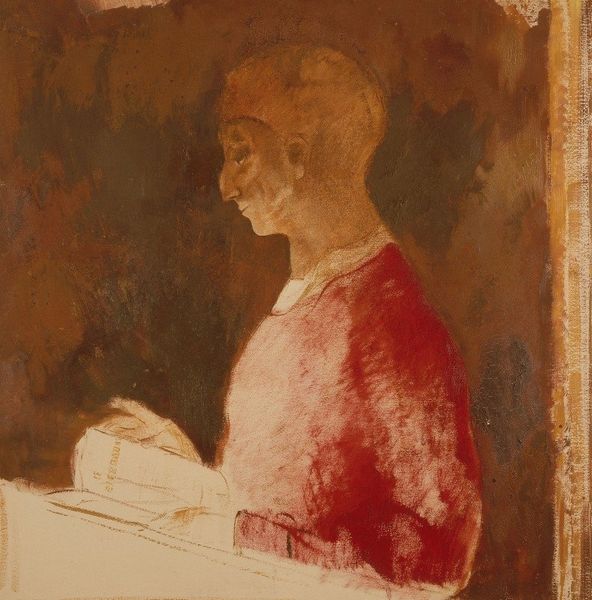
Copyright: Public Domain: Artvee
Curator: This is Mikuláš Galanda’s "Blind Man," an oil on canvas created in 1934. What strikes you first? Editor: The upward reach of his hands against that muted green backdrop. It evokes a sense of supplication, maybe even desperate longing, despite the overall softness of the palette. Curator: Interesting. Considering the period, Galanda was working within a tense socio-political climate in Czechoslovakia, deeply impacted by the rise of fascism and the increasing sense of national vulnerability. Could that inform our interpretation of "blindness"? Editor: Certainly. The hands could represent searching or pleading in the face of overwhelming forces, rendered blind by political unrest. The raised hands, often a religious gesture, suggest a search for help. Galanda frequently referenced folk traditions, blending them with modernist sensibilities. Curator: Absolutely, the symbol of blindness extends to other realms, like the inability or refusal to acknowledge social injustices. I see parallels with works of artists like Käthe Kollwitz, capturing raw emotion tied to suffering during that time. The "blindness" may act as critique of those unwilling to confront political realities. Editor: I am reminded, too, of older iconographies, of prophets or holy figures whose sight transcends the physical. Though, this figure lacks the usual markers of saintliness, so perhaps Galanda plays on that ambiguity. Curator: Galanda's work frequently tackled identity and alienation, particularly the Slovak experience navigating cultural and political shifts. This "Blind Man" can be viewed as embodying that sense of displacement and seeking guidance in the face of uncertainty. Editor: It makes you wonder, is the figure really blind? Or has the light just become too much to bear, making him search within for answers? Curator: That ambiguity, I think, is precisely what makes it compelling. It captures a multifaceted experience, personal and collective. Editor: Agreed. It remains a poignant study of humanity and its ongoing struggle for meaning during turmoil.
Comments
No comments
Be the first to comment and join the conversation on the ultimate creative platform.
